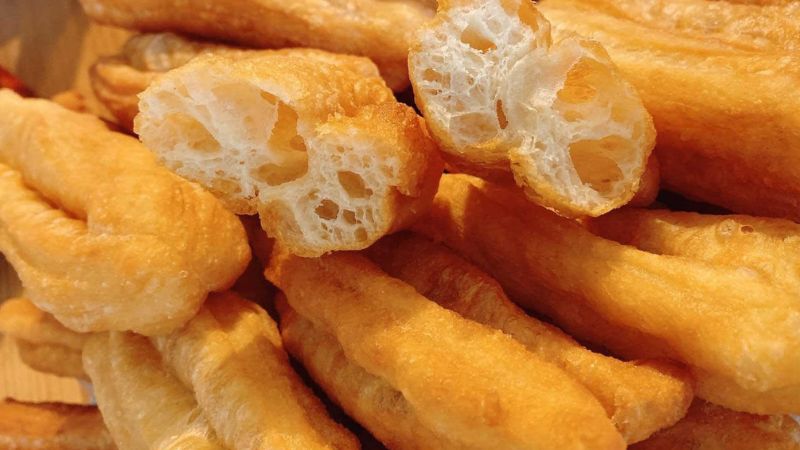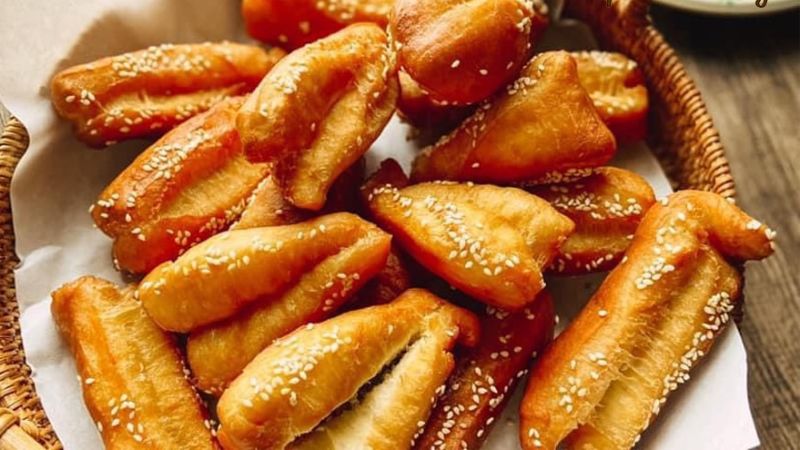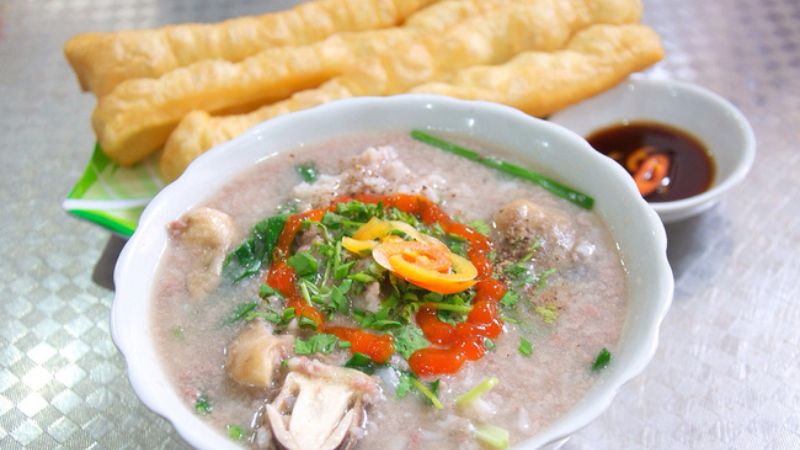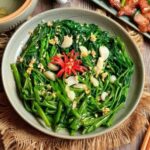Bánh quẩy is a popular treat in Asia, with a nutty, greasy flavor often accompanied by congee, soy milk, or rice wine. Despite its delicious taste, it’s important to be mindful of the calorie count in each piece. Let’s explore how many calories are in bánh quẩy and whether indulging in this treat can lead to weight gain.
1 Bánh Quẩy Calorie Count
 How many calories are in Bánh Quẩy?
How many calories are in Bánh Quẩy?
The calorie count per bánh quẩy varies depending on the ingredients and preparation methods, but typically, according to nutrition experts, each piece contains approximately 92 calories. However, the calorie count increases significantly to 460 calories per 100g of bánh quẩy.
Additionally, different variations of bánh quẩy have distinct calorie counts. For instance, a bowl of giò cháo quẩy contains roughly 462 calories, while 100g of sweet or twisted bánh quẩy can reach up to 578 calories. On the other hand, 100g of spicy bánh quẩy contains about 476 calories, and the drumstick-shaped variety has only around 75 calories.
2 Can Bánh Quẩy Cause Weight Gain?
 Can eating Bánh Quẩy lead to weight gain?
Can eating Bánh Quẩy lead to weight gain?
As mentioned earlier, a single bánh quẩy contains around 92 calories. Consuming just one piece won’t instantly make you gain weight. However, indulging in bánh quẩy without moderation, eating too much, or eating it too frequently can increase the risk of excessive weight gain and, over time, obesity.
Other factors also play a role in determining whether eating bánh quẩy will lead to weight gain, such as what you eat it with, your exercise routine, daily diet, and lifestyle habits.
Given the high fat and calorie content in bánh quẩy, excessive consumption can indeed lead to fat accumulation and obesity. It is considered one of those treats that can easily contribute to weight gain and a bulging belly.
3 Are There Any Health Benefits to Eating Bánh Quẩy?
 Are there any health benefits to eating Bánh Quẩy?
Are there any health benefits to eating Bánh Quẩy?
Bánh quẩy is typically made with wheat flour, baking powder, and alum, deep-fried in a pan until slightly browned and served in pairs. As such, it is predominantly composed of carbohydrates and contains a significant amount of fat, which are not the healthiest of combinations.
Overindulging in bánh quẩy can lead to uncontrolled weight gain, obesity, and health issues such as fatty liver and high cholesterol. Furthermore, the alum used to enhance the crispiness of the treat is a food additive that contains aluminum. Consuming too much alum can negatively impact your health, potentially causing kidney problems, osteoporosis, or aging-related concerns.
4 How to Enjoy Bánh Quẩy Without Gaining Weight
 How can you eat Bánh Quẩy without gaining weight?
How can you eat Bánh Quẩy without gaining weight?
To maintain a healthy balance, the recommended daily calorie intake is around 1800-2000 calories. When indulging in bánh quẩy, be mindful of your calorie consumption and ensure it’s less than the amount you burn through daily activities. Additionally, regular exercise is crucial to burning excess fat and maintaining a healthy, energetic body.
Drinking plenty of water before eating and pairing your bánh quẩy with vegetables, fruits, or yogurt can help control hunger and reduce the amount you eat. It’s best to avoid eating bánh quẩy in the evening, and limit your intake to no more than 2-3 times a week. Otherwise, managing your weight can become challenging, and your health may suffer.
We hope this article has provided valuable insights into the calorie content of bánh quẩy and the potential impact on your weight. Remember to enjoy treats like bánh quẩy in moderation as part of a balanced diet and healthy lifestyle!
Source: nhathuocankhang.com








































